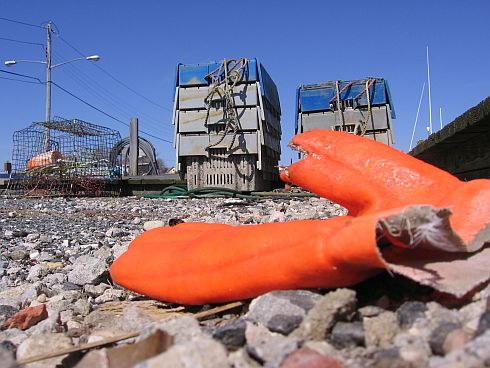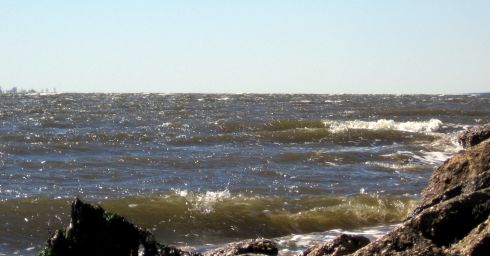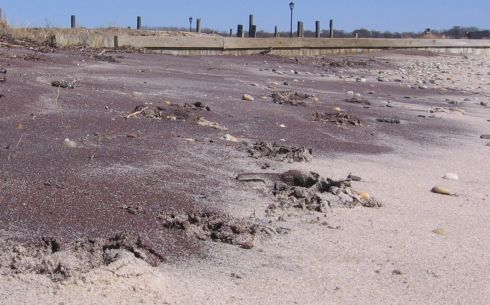As I was on my belly taking this picture, I heard a voice asking me if I was looking for rats. “No, I’m just taking a picture of this torn glove.” In response to the giant question mark on the guy’s face, I explained that with the crates and crab trap in the background it might turn out to be a nice shot. You know, one of those artistic ones you see for sale in the little shops in Greenport or The Nautical Mile.

As it turns out the guy asking the questions was John Buczak, one of the few Long Island baymen still earning a living at this ancient, vanishing craft, and it was his dog that bit the thumb off of the glove.
We shot the breeze for a while, covering all the important topics like high fuel prices, decreasing fish populations, increasing regulations, and all the seafood imported from who knows where. We wondered what the future holds for Long Island’s baymen and fisheries, and if it would someday be impossible to eat locally caught fish.
Hmmm…
Read more about John and other noted baymen in this New York Times article.
We had some pretty rough weather last weekend and while visiting the beach I saw some striking bands of red and black sand tossed up by the waves.

Whitecaps and waves on the Great South Bay
This is a common sight and you’ve probably noticed these colors in long strips running lengthwise down the beach. The colored sand is composed of garnet and magnetite in roughly a 52/45% proportion with the remaining 3% composed of other minerals. The soft white sand that makes up the majority of Long Island’s beaches is quartz.

A lot of garnet and magnetite on a beach at the East Islip marina
As a kid I always wondered why and how the red and black sand grains gathered together. It wasn’t until my junior high school science teacher, Mr. Lewis explained it to me that the mystery was solved. The garnet and magnetite are much denser than the quartz, so wind and wave action affect those grains differently. That tends to sort them out from everything else.
If you want to look like a geek next time you go to the beach, bring a magnet and magnifying glass (like I do). Drag the magnet through the sand and then look at it with the magnifying glass. You’ll see that it picks up black grains of the aptly named magnetite, which is composed mostly of iron.


